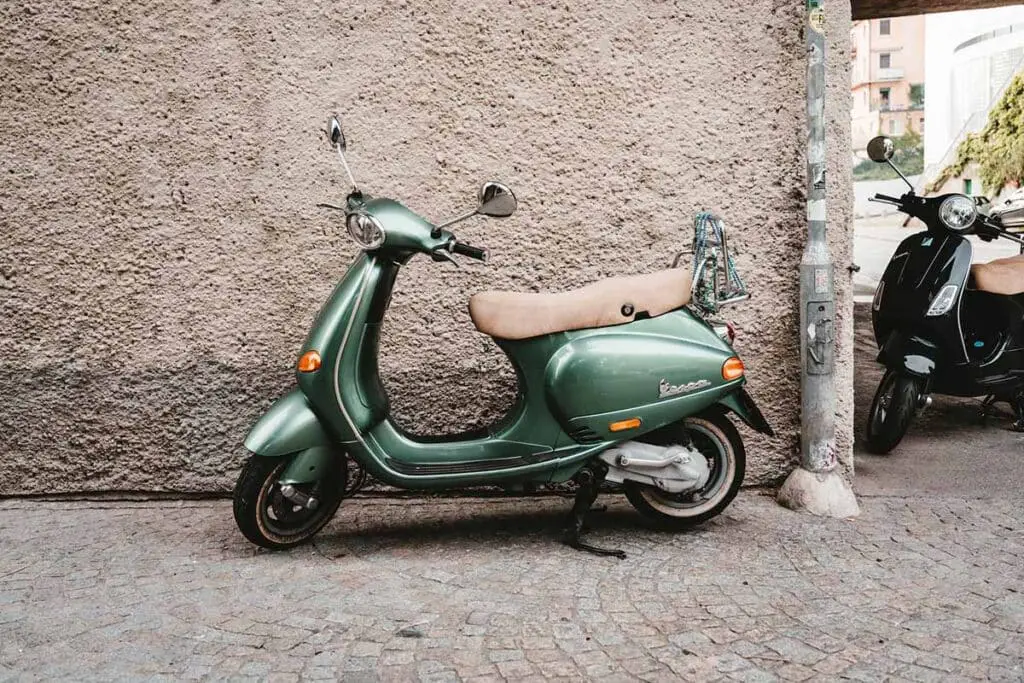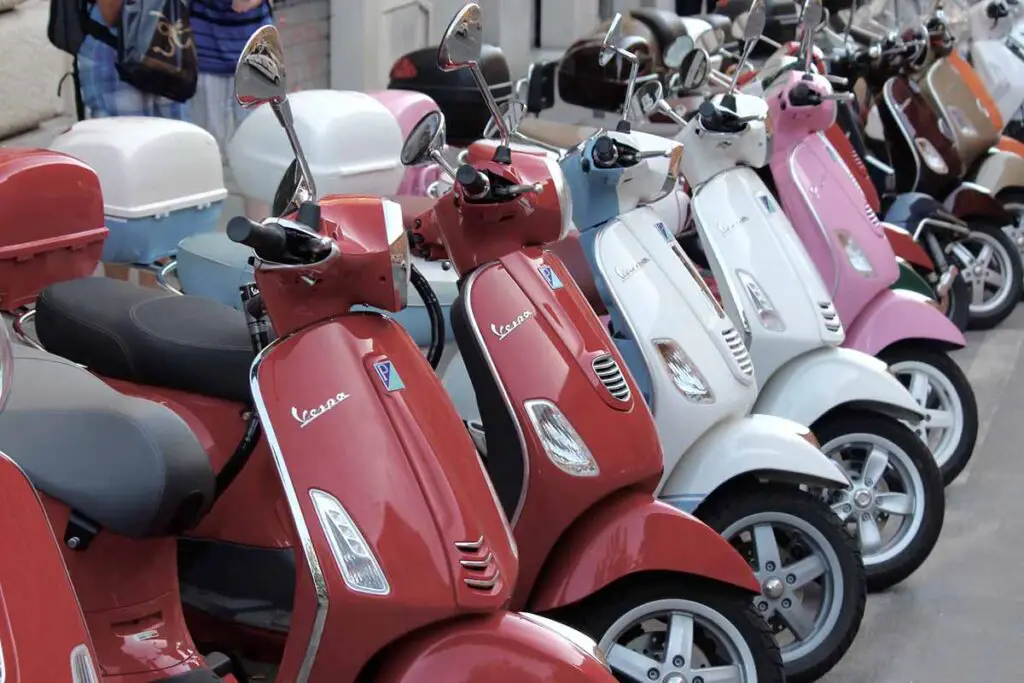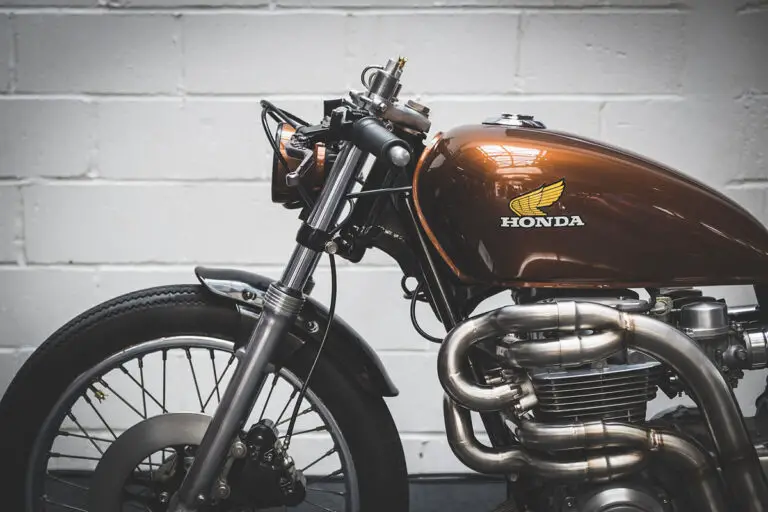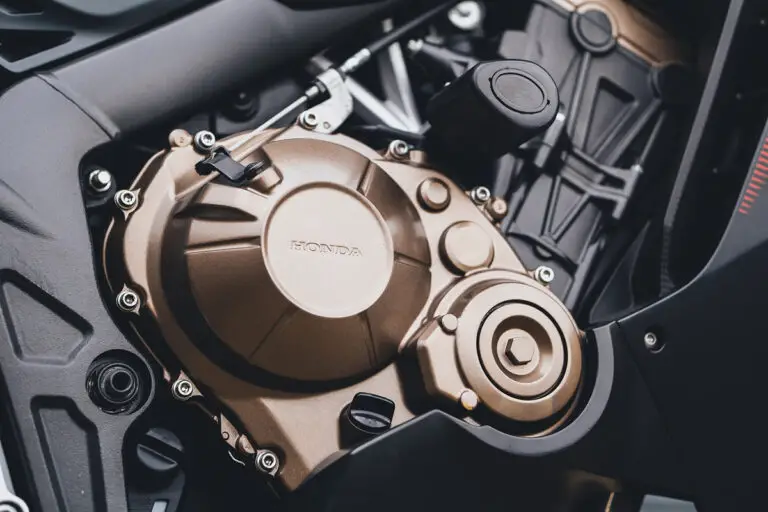How to Kickstart a Moped (4 Simple Steps)
Disclosure: We may get commissions for purchases made through links in this post.
With modern-day two-wheelers, kickstarting is no longer standard since most OEMs deem it redundant (if not irrelevant). But the reverse is true for classic thumpers that rely on this feature to circumvent unexpected starter or battery problems.
Either way, knowing how to kickstart is a crucial skill to have — especially if you own a moped.
The procedure entails relatively easy steps. Put your bike in neutral, squeeze the brake, stomp on the kickstarter pedal, and open the throttle. Other methods are involved, depending on your battery’s state and other factors.
Below are the steps on how to kickstart mopeds in list form:
- Locate the kickstart lever.
- Prep your two-wheeler.
- Tinker with your moped and squeeze the brake lever.
- Stomp the kickstart pedal.
When done incorrectly, kickstarting a two-wheeler can turn into a foot-bruising maneuver that riders eventually dread performing. But with the right steps, the skill can become a lifesaver in times of need.
Let this article enlighten you on how to kickstart a moped, so you know what to do when caught in troublesome situations.
Steps on How Kickstart Mopeds

1. Locate the Kickstart Lever.
If you are new to mopeds, you first need to find out where the kickstart pedal is and put it out (if folded away). While at it, inspect that fuel levels in your tank (view on Amazon) are adequate for kickstarting your moped.
You do not need a lot of fuel. However, fuel levels should not be anywhere near the reserve amount.
Additionally, you may want to perform a quick pre-ride inspection. The process entails checking for improper tire inflation, loose or broken lines, fluid leaks, and damage.
2. Prep Your Two-Wheeler.
In addition to turning on the ignition key, there are a few other things to do before kickstarting your bike. First, wear appropriate footwear — not heels, flip-flops, or any other shoe with soft sole material, lest you risk getting stone bruises.
Second, shift your gear to neutral. Third (and this is optional), open your moped’s pressure release to reduce possible kickstart pedal feedback.
The fourth reminder is placing your moped on a center stand, which is (for the most part) arguable. Structurally, mopeds are more stable and closer to the ground — given their smaller wheels and step-through frame design.
Because of their lower center of gravity, putting them on a center stand (view on Amazon) would not make much of a difference to how you kickstart them.
3. Tinker With Your Moped and Squeeze the Brake Lever.
Kickstarting a moped (or any other motorcycle, for that matter) is not as straightforward as many of us hope it would be. Before doing a few swift kicks, put the kill switch in the RUN position and turn the fuel valve on.
You may also need to give it some gas, re-engage its compression release every two kicks (or until you feel resistance from the pedal), or play with its choke a little.
Once done with the above steps, squeeze the brake lever the same way you would when using the electric start to bring your bike to life. This step is never one to disregard, as it is a precautionary measure that keeps you from accidentally lunging forward.
4. Stomp the Kickstart Pedal.
Since mopeds are small-displacement machines, the best starting position for a kickstart is tramping down on the kickstart pedal with your heel while straddling the bike between your legs.
Kickstarting it while sitting down usually works, especially if you are on the light side. However, doing so while standing up generates greater downward force and is better preferred by many riders.
Tips:
- If your engine is cold, give your moped a couple of kick-throughs to ensure sufficient gasoline in the cylinders.
- Give your moped a little throttle as you stomp down on the kickstart lever to overcome slight difficulties.
- In some regions, mopeds go up to 125-150 ccs and may have a manual spark advance lever on the handlebars (view on Amazon). If this is the case for you, do not forget to retard it before kickstarting. Otherwise, you may just find yourself a good distance away from where you were planted.
- Mopeds generally roar to life after four hard kicks to the kickstarter pedal. If it does not do so within those attempts, consider a tune-up.
- Also, there is no cookie-cutter technique to kickstarting — except for ensuring you do not lock your knee when kicking.
Barring complications, your moped should have already been turned over at this point. All that’s left to do is engage the throttle by slowly twisting it to allow more air to enter the engine. After which, you can go about and ride to your heart’s content.
When Should You Kickstart Your Moped?

For the most part, kickstarting is advisable when it is your first time using your moped. Other reasons to kickstart your two-wheeler are stated below (these bullet points are non-exhaustive):
- To take the burden off your battery during cold starts
- To start your moped when the battery is in a state of discharge or completely dead (provided your moped is not heavily electronic)
On this note, it is imperative to understand the purpose of the kickstarting feature. It is an optional utility in your two-wheeler originally intended for emergency situations.
If your moped has an electric starter, it would not be ideal to use your kickstart lever daily.
Potential Problems During Kickstarts
For vintage mopeds still equipped with kickstarter pedals, the only thing that could interfere with starting the engine are complex electrical problems or a fully discharged battery.
Contrary to popular belief, no amount of kickstart will start engines with a flat battery (view on Amazon). The only workaround to this scenario is replacing the battery altogether.
As for your moped’s electricals, its most common pitfalls include blown fuses, fouled (sometimes bone-dry) spark plugs, and a dysfunctional starter (another aftermath of working your battery to the ground). Like batteries, the only way to solve these hiccups is by replacing affected components.
Obstructed air intake systems, a seized engine, and flawed ignition timing are other potential contributors to kickstarting problems. You would know to suspect your ignition timing is off if you hear a ticking sound while trying to start the engine.
Noises aside, you may momentarily succeed in kickstarting, only to have your moped backfire immediately after.
The Bump—Start Method
This technique is a popular alternative to kickstarting and is advised by experienced motorheads and savants when you have kickstarted your two-wheeler to the point of exhaustion.
You will need a peer or two to push your moped (and you) to terminal velocity. Once you are in motion, pull the clutch in, shift to 2nd gear, then pop the clutch.
Conclusion — How to Kickstart a Moped

In conclusion, here are four simple steps on how to kickstart mopeds:
- Locate the kickstart lever.
- Prep your two-wheeler.
- Tinker with your moped and squeeze the brake lever.
- Stomp the kickstart pedal.
Following the procedure detailed here will prove beneficial — during those cold mornings and unforeseen situations. Knowing how to kickstart a moped should help you reach your destination (if not get you home safely).
Some of the steps shared in this guide may differ depending on your moped’s make, model, and configuration. Nonetheless, they are useful information to have, especially when it matters.







